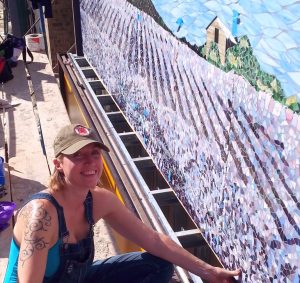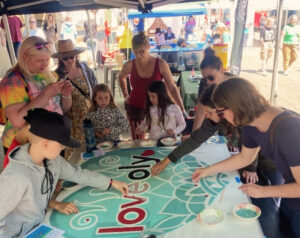Andamento is the fundamental principle for creating effective mosaic artwork, and is a skill that requires practice and training to master. The word Andamento is borrowed from an Italian musical term, and refers to the flow or movement of tesserae (the pieces) in a mosaic. Andamento directs the eye and sets the tone for the image, whether that is calm and measured, dynamic, chaotic or playful.
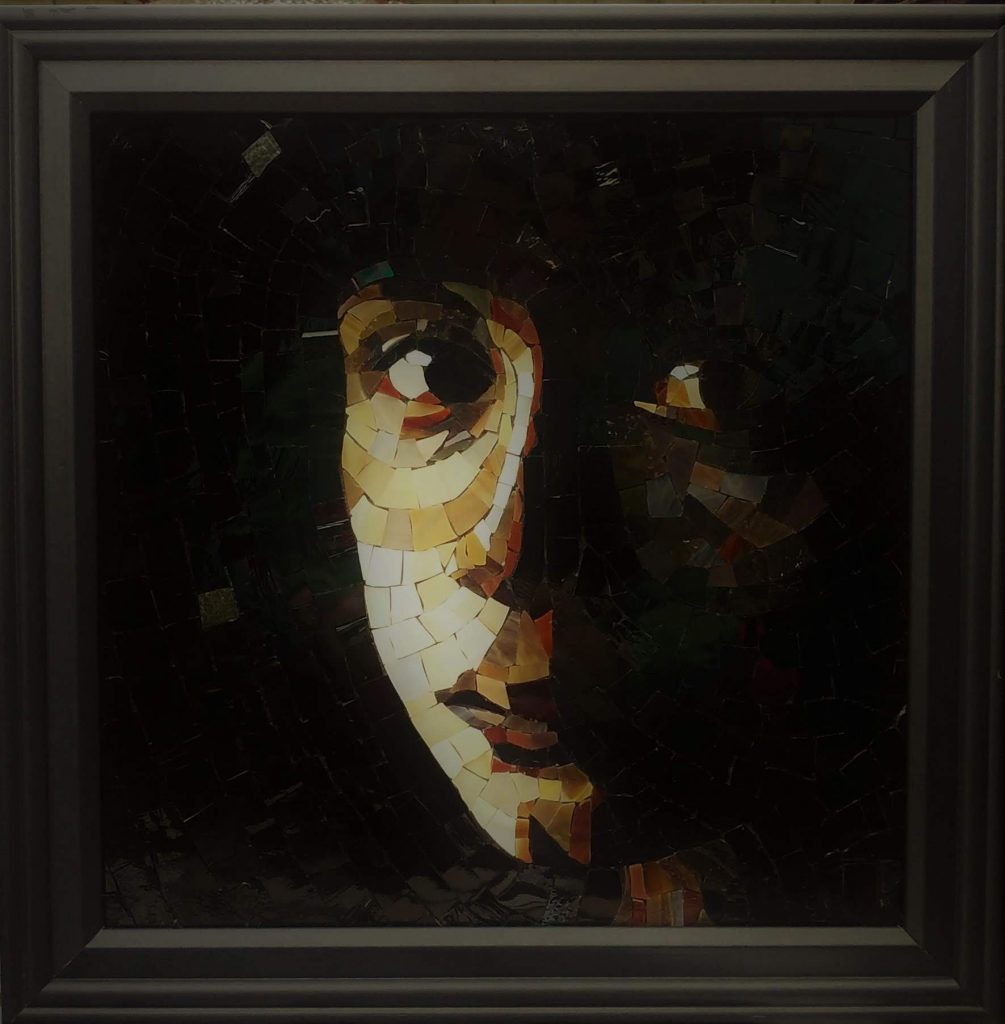
The above portrait is an example of the most classical approach to andamento, which is arranging the tesserae in rows, following contours of the image. Note how the pieces of glass follow the cheekbone. This style gives the image a naturalistic look and does not draw attention to the material.
But there are endless types of andamento. Most have Latin names that begin with “Opus” again stemming from musical terms. I am not going to write out definitions and examples of them for the most part, because others have written more thoroughly and eloquently on the subject. Here, I am drawing attention to this vital aspect of mosaic art for anyone who might be interested, and encourage mosaic enthusiasts to look for the andamento and think about how it affects the work.
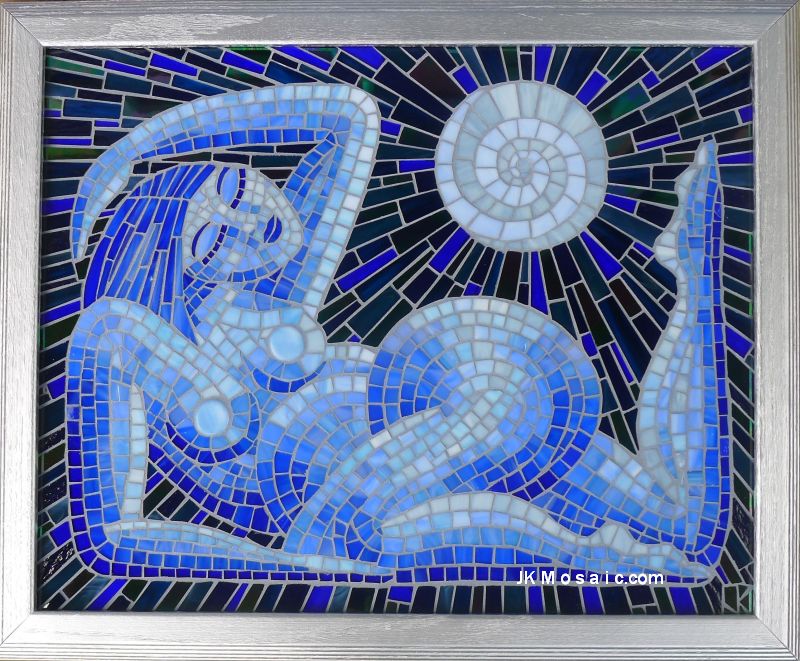
2013 version of Blue Moon 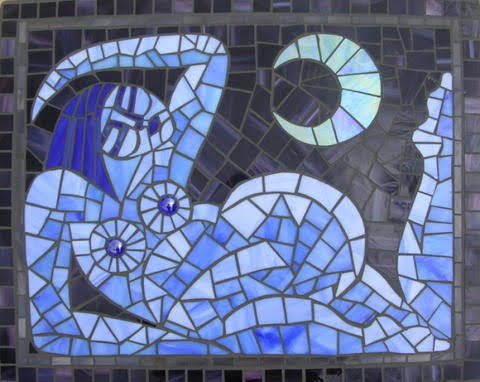
2007 version of Blue Moon
I’m sorry the above images are in reverse order. I use these to demonstrate the importance of Andamento in my workshops. I made the mosaic on the right in 2007. I had been fairly isolated, teaching myself mosaic without formal training for seven years, and I placed the pieces wherever they fit, with consideration for value, but very little control over, or concern about, the groutlines. It would be two more years before I attended my first American Mosaic Summit and began to (reluctantly, actually) absorb some of the information. I had developed habits that proved hard to break. But by 2010, I had become more deliberate in my choices, and in 2013 I decided to re-work the same design.
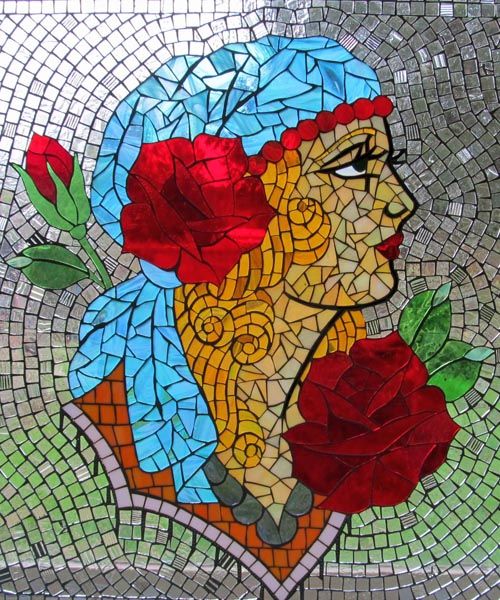
My mosaic style remains much more playful and stylized than most of my colleagues, many of whom are known for their mastery of andamento. Julie Sperling and Rachel Sager are both andamento gurus, particularly with abstract, stone work. Sonia King developed a signature radiating style that has become ubiquitous in the mosaic world. Kelley Knickerbocker breaks rules and takes andamento to new levels with her conceptual approach. Michael Kruzich is the king of classical andamento using ancient methods. And there are so many more. I address the topic with humility because I have not undertaken the level of study as these other artists, and my approach is completely different.
Which brings me to my specialty: Opus Sectile. Looking at my work, you will see that I often cut entire sections out of one piece of glass rather than filling it with a number of pieces. I enjoy the feel of hand-cutting precision shapes from glass, and I have become adept at it. For my folk-art and stylized designs, using bold, solid shapes is effective, creating focal points that stand out, and mixing other andamento styles for background or details.

I made the mosaic below as an example of Opus Sectile, cutting almost every shape from solid pieces:

I hope this helps to broaden understanding of just one aspect of mosaic art/craft that contributes to a successful work of art. There is much more detailed information throughout the internet, and if you are an aspiring mosaic artist, I strongly encourage you to seek out instruction. And if you are a mosaic art fan, I hope you will see the work in a new way, appreciating the care and skill of the artist, generally developed over many years of dedicated practice.
For more detailed information on this topic, consider joining my Zoom workshop every Wed. in May:




